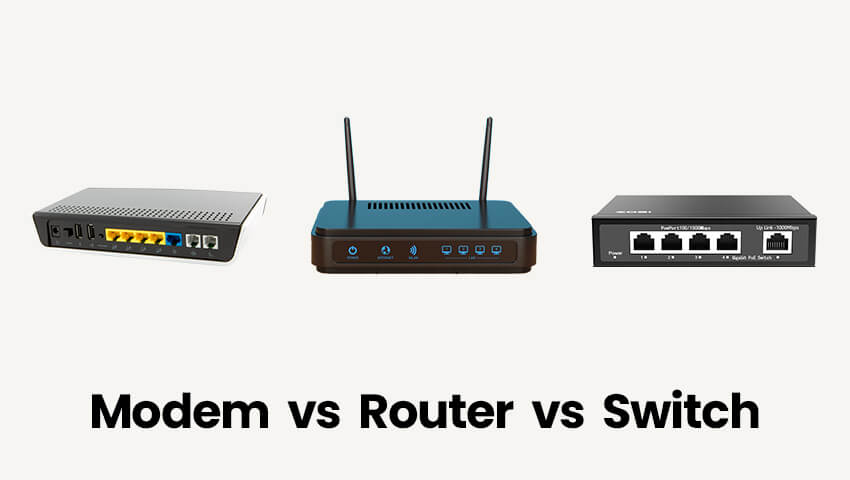| When setting up a surveillance system, three critical networking devices often come into play: modems, routers, and switches. Each serves a unique purpose in ensuring your security cameras function optimally. But what exactly do they do, and how do they differ? Let’s break it down.
Contents What is a Modem?A modem (ModulatorDemodulator) is your gateway to the internet. It connects your local network to your Internet Service Provider (ISP), converting digital signals from your devices into analog signals for transmission over cable, DSL, or fiber lines—and vice versa. What is a Router?A router directs traffic between your modem and connected devices (like security cameras, NVRs, and smartphones). Unlike a modem, it assigns local IP addresses, manages bandwidth, and provides firewall protection. Key Roles in Security Systems: What is a Switch?A switch expands your wired network by providing additional Ethernet ports. Unlike a router, it doesn’t assign IPs or manage internet traffic—it simply ensures efficient data transfer between connected devices. How They Work Together in a Security System Which One Do You Need?✅ Modem Only – If you only need local recording (no remote access). Final ThoughtsUnderstanding the difference between modems, routers, and switches helps optimize your security setup. While a modem gets you online, a router organizes your network, and a switch expands wired connectivity—especially crucial for PoE cameras. |
Modem vs Router vs Switch: Understanding the Core of Your Security Camera Network

